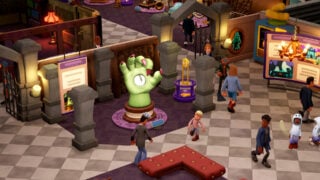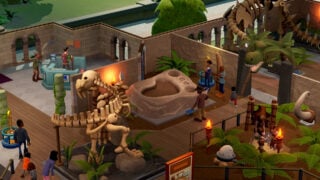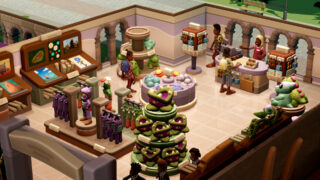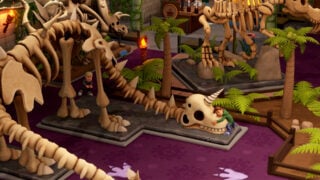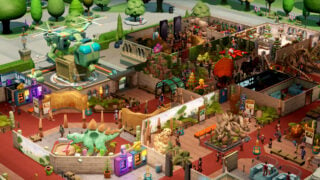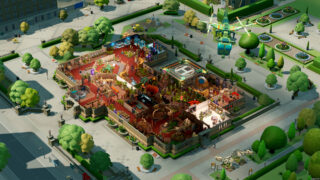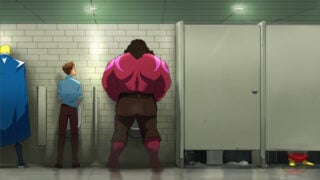Two Point Museum review: Sega’s comedy curate ’em up is surprisingly deep
Two Point Studios navigates its ‘difficult third album’ with relative ease
- Design director
- Ben Huskins
- Key Credits
- Luke Finlay-Maxwell (Lead designer), Jo Koehler (Executive producer)
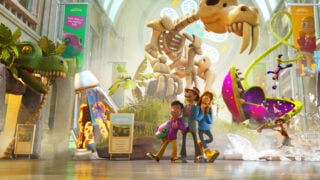
It doesn’t take an experienced archaeologist to get to the bottom of what Two Point Museum is all about.
As the title suggests, the third game in the Two Point series puts the player in charge of running and curating a museum. The player expands the museum’s scale, introduces new exhibits, and uses every trick in the book to ensure visitors are kept both entertained and educated throughout their visit.
Although the setting in Two Point Museum may be different, players of Two Point Hospital and Two Point Campus will still find plenty of similarities here, certainly enough to make the first couple of hours with the game an absolute breeze.
The viewpoint, UI, and overall vibe of the game are carried over from those of its predecessors, the most important being the fantastic creation tools used to build various rooms and amenities. Two Point Studios has now absolutely mastered this interface – which itself is an evolution of that used in Theme Hospital – and it’s one of the most straightforward yet effective sets of building tools we’ve seen in a game.
That said, veterans of Hospital and Campus may not want to get too comfortable, because many of their previous tactics for building rooms will have to go out the exhibit room window here. Because a museum is a very different building to a hospital or university campus, it features far fewer ‘rooms’ in the traditional sense.
While players can still build enclosed rectangular rooms as in the previous games, these will be fewer and further between in Two Point Museum, restricted initially to such things as staff rooms, toilets, and gift shops. For the most part, you’re dealing with larger, open spaces where your exhibits are placed.
Naturally, it’s still possible to divide these exhibits into smaller sections – a must later in the game when you’re dealing with numerous distinct themes – meaning you can still use walls, rope barriers, or what have you to guide visitors around, but in general the nature of museum planning means the previous games’ dilemma of ‘how do I fit each of these rooms into this building’ is less of a pressing matter.
That isn’t the main difference between Two Point Museum and the previous games, however. The most notable change is the addition of a new expeditions feature, which completely reinvents the way players gain new assets to work with.
Whereas Hospital and Campus were more focused on unlocking new medical equipment and educational courses through research funding, in Two Point Museum you instead have a helipad which allows your staff of experts to fly off on various excursions around the world in an attempt to bring back new artifacts for display.
Expeditions are planned on a large world map which sees you unlocking new locations by carrying out a variety of objectives, be that improving the museum in certain ways or giving staff member specific training. Certain areas can’t be visited unless you have a set number of staff members, some of whom need to be skilled in a specific discipline before they can be allowed to head out.
As such, much of the progress in the game entails finding areas on the map you can’t yet access, and ticking off the objectives needed to unlock them, in turn expanding your horizons and ultimately bringing a wider variety of exhibits to the museum.
“A duplicate can be sent to a team of analysts who will break it down and study it, increasing their knowledge of it. This in turn makes the information boards in your museum more detailed and makes your visitors happier because they feel like they’re learning more.”
Successful expeditions see a large crate arriving at your museum, containing a new artifact. Unlocks don’t follow a linear sequence – each expedition destination has a group of potential artifacts, meaning each time a new crate arrives there’s no way of guaranteeing what’s inside it.
Because the number of potential artifacts in each area is finite, opening the crate can either result in something new, or a duplicate of something you already own. This may initially seem frustrating but can actually be beneficial because the duplicate can be sold for extra money if funds are low.
Even better, a duplicate can be sent to a team of analysts who will break it down and study it, increasing their knowledge of it. This, in turn, makes the information boards in your museum more detailed and makes your visitors happier because they feel like they’re learning more.

There is a random element to expeditions which could prove frustrating for some. At times your staff may come back injured, potentially putting them out of action for quite some time (or may not even come back at all). The exhibits they bring back also vary in quality: sometimes you’ll get lucky and find a pristine one but there’s every chance you may get something that’s in rougher shape, which has an impact on its effectiveness in a museum setting.
The game does a good job of keeping a steady stream of new content coming. Just as it starts to feel like things are getting repetitive, you’ll given a completely new theme to work with, so while at first you’re mainly dealing with prehistoric items that eventually makes way for exhibits based on the likes of outer space, underwater or even the paranormal.
Two Point Museum isn’t without its flaws. As previously mentioned, the expedition system does add a bit of excitement because it makes things less predictable but does also add a loot box element to the game (without microtransactions, I should stress), especially for players who are adamant that they want pristine versions of every exhibit: that’s a lot of trying over and over again.
“The game does a good job of keeping a steady stream of new content coming. Just as it starts to feel like things are getting repetitive, you’ll given a completely new theme to work with”
The concept itself may not also excite people in the same way the previous games did. While Hospital and Campus are both about putting everyone through a set process – get them in, give them the cure or education they require, then get them out the door with as little hassle as possible – here the aim is to not to process each visitor in a timely manner but the opposite: you want to keep them in your museum for as long as you can. This isn’t necessarily bad, but it’s different.
It also makes for some slightly less entertaining gameplay. It was hilarious seeing patients turning up with all manner of comedy illnesses in Two Point Hospital, as was the bizarre methods used to cure them. Similarly, some of the courses in Two Point Campus were brilliantly silly, and watching students building 15-foot cakes and taking part in jousting competitions was a treat.
Here, the vibe is rather different. While there’s still a lot of humor to be found—some of the exhibits you discover are comedy gold, and the tannoy announcer is back and as funny as ever—the nature of museums means the visitors are no longer being cured of Premature Mummification or being convinced by a therapist that they’re not Freddie Mercury; they’re often just standing and looking at things.
Still, that’s the nature of the setting, and it’s clear that Two Point Studios has still done everything in its power to ensure Two Point Museum continues to deliver not only the same sense of humor as its predecessors, but also gameplay that is both immediately accessible (especially to existing Two Point fans) but takes the series in new directions too. In that sense, it has succeeded.
Two Point Museum review
Fans of the Two Point series will already know that Two Point Museum is a silly but compelling simulation which is easy to learn but hides a surprising amount of depth and variety. The new expedition mode, despite feeling a tad lootboxy, nevertheless ensures that this isn't just Two Point Hospital or Campus with a new lick of paint, meaning while we'd heartily recommend it to newcomers, veterans who thoroughly rinsed its predecessors shouldn't worry about this just being more of the same.
- Still has that brilliant Two Point sense of British humour
- Expedition feature adds a freshness to the process of unlocking new items
- Creation tools remain so easy to use
- Open floor museum structure means less focus on rectangular rooms
- Visitor animations aren't quite as dynamic as in Hospital and Campus
- Expeditions can feel a bit too random at times
